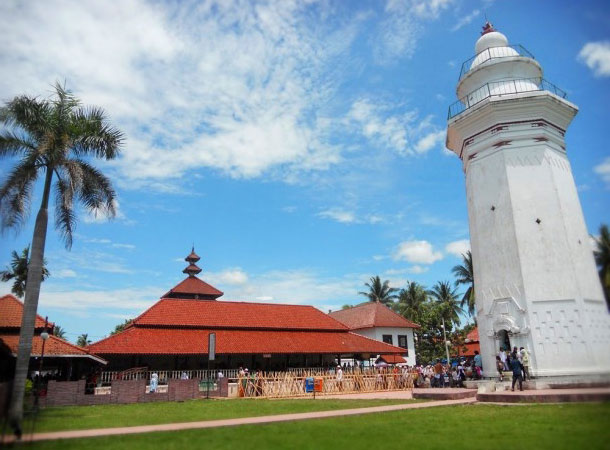What do you think about Banten? Many think that Banten is an area within the province of West Java. While in fact, it is a province of its own with unique characteristics that set it apart from the rest of Java. Many parts of Banten with the capital city of Jakarta. The districts of Ciputat, Pamulang, and Serpong border with South Jakarta, and Karawaci with West Jakarta. And until November 18, 2000, Banten was part of West Java Province. The towns of Ciputat, Pamulang, Serpong were then simply known as the “outskirts” of Jakarta.
SEE ALSO: 10 Most Popular Destinations in Jakarta
In general, the culture and traditions in Banten are similar to those in West Java. But there are several fundamental differences often overlooked by many. This is one of a number of reasons why leaders of Banten strived for their area to be separated from West Java and officially inaugurated as its own rightful province; a dream that finally came true at the turn of this century. Banten became Indonesia‘s 30th province.
Looking back into an era prior to the 16th century, the area of Banten was then known as Banten Girang or Banten Hulu. Located 3 km from current Serang City, it was an area with no significant role within the reigning Pajajaran Kingdom. However, since the arrival of leading Muslim scholars from Cirebon, Sunan Gunung Jati, Banten’s name began to surface. Not only teaching and spreading the wisdom of Islam, Sunan Gunung Jati had triggered wonderful development in Banten. By the early 1500s, Banten had grown and become a bustling commercial port, the second largest port after Sunda Kelapa Harbor in Jakarta. Moreover, with the fall of Malacca- an important port on Malacca Strait at the time – to the hands of Portuguese in 1511, the position of Banten Lama Harbor rose to the top as traders from the Middle East and China much preferred to make their stops in Banten instead of in Malacca.
Along with that, Banten also became an Islamic empire. Banten Girang, which used to be the center of governmental activities, was moved to Surosowan to be closer to the harbor. The move immediately strengthened Banten’s political position. Interestingly.s the founder of the kingdom, Sunan Gunung Jati refused to be king. Instead, he abdicated the throne to his who became the first King of Banten.
These glorious days came to an end when a fleet of Cutch ships commanded by JP. Coen arrived in Banten at the end of the 16th century. On the initial pretext of trade, slowly but surely on colonial claws of the Dutch East Indies Company began to grip Banten and later everywhere throughout the archipelago.
Surosowan Palace, the palace of the first empire in Banten. Constructed during the reign of Sultan Maulana Hasanudin, the palace stood on a three-hectare area and was surrounded by five-meter thick high walls. But when the Dutch conquered the kingdom, the palace was destroyed. Now, only the remains of the wall can be seen.
Not far from the palace, there is the Great Mosque of Banten. Unlike the palace, the mosque still stands proud and strong and functions as a house of worship. This icon of Banten Lama was built during the supremacy of the first king of Banten and was heavily influenced by European and Chinese architectural styles. Consisting of four features, the main perfect square building with a five-tiered roof serves as a place of worship.

Stepping out of the grand mosque’s complex and into the small village of Kroya, we discovered another palace, the Kaibon Palace. Kaibon was derived from the word “keibuan” which means motherly because the palace was used by Queen Aisyiah, the mother of Sultan Syafiuddin, as a refuge after the Surosowan Palace was demolished. Sadly, this palace, too, had to meet its bitter end at the hands of the Dutch. The Kaibon palace today is in a slightly better condition than Surosowan Palace. Here, we could still get a rough picture of what the palace must have looked like in its glorious past.
